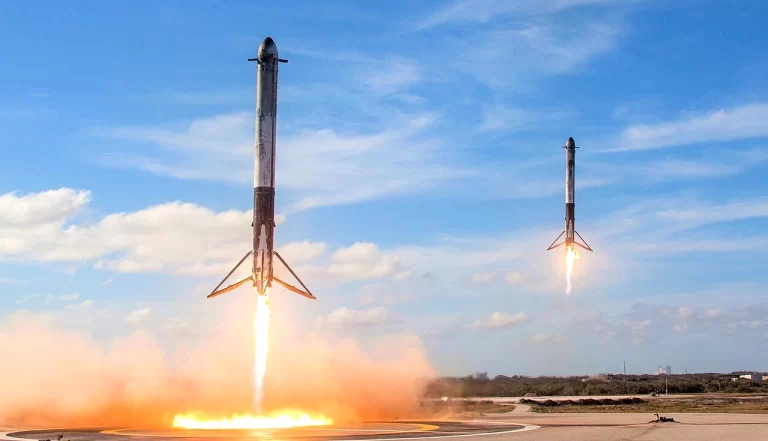The advent of 5G technology marks a significant evolution in the telecommunications sector, promising to revolutionize various aspects of business and consumer connectivity. This case study explores Verizon’s journey in the early adoption and rollout of 5G technology, the challenges faced, the solutions implemented, and the resulting benefits. Additionally, the strategies of other competitors in the market will be discussed.
Verizon: Company Overview
Verizon stands as a distinguished leader in the global telecommunications industry, renowned for its persistent innovation and commitment to enhancing connectivity solutions. With a rich history dating back to the late 20th century, Verizon has consistently demonstrated its prowess in evolving with technological advancements, ensuring its services remain relevant and cutting-edge. The company’s core mission revolves around delivering superior network technology, exemplified by its pioneering role in the rollout of 5G technology. At the heart of Verizon’s operations is a dedication to customer satisfaction and the development of infrastructures that support fast, reliable, and secure communication. This commitment has cemented Verizon’s status as a key player in driving forward the telecommunications landscape, marking it as an influential force in shaping the future of digital connectivity.
Challenges in 5G Adoption
Verizon faced several challenges during its 5G rollout:
- Market Confusion: Misleading labeling of 4G LTE Advanced networks as 5G by competitors led to a misunderstanding of 5G’s true capabilities, posing a challenge to Verizon’s market positioning.
- Technology Innovation Stagnation: The industry faced a threat of slowed progress in 5G development due to competitors’ focus on marketing hype rather than actual technological improvements, impacting the overall advancement of 5G technology.
- Partnership and Investment Risks: The prevalence of hype-driven strategies jeopardized essential partnerships and investment opportunities in the 5G sector, crucial for the technology’s future growth and innovation.
Verizon’s Solution
Verizon’s strategy for addressing these challenges was multi-faceted:
- Robust Commitment to Transparency: The company pledged to only designate its networks as 5G when they genuinely conformed to the new technological benchmarks, ensuring accuracy in customer communication and market representation.
- Strategic and Focused Investment: Verizon directed its resources toward authentic 5G technological developments. This approach involved not just financial investment but also a commitment to research and collaboration with tech innovators, aiming to foster real advancements in 5G technology rather than engaging in the mere promotion of existing capabilities.
Results and Benefits
The rollout of 5G by Verizon led to numerous advancements:
- Enhanced Speeds: Verizon achieved 1.45 Gbps in 4G LTE Advanced, with 5G speeds potentially reaching 10 Gbps.
- Rapid Service Deployment: Network virtualization reduced service deployment times dramatically.
- Improved Mobility: Testing enabled fast-moving vehicles and trains to stay connected via 5G.
- Increased Connectivity: 5G could support up to 1 million devices per square kilometer.
- Energy Efficiency: 5G networks are up to 90% more energy-efficient than 4G.
- Data Volume: The 5G network is designed to handle up to 10 TB/s/km².
- Reduced Latency: 5G offers significantly lower latency compared to 4G LTE.
- Network Reliability: Leveraging its experience from 4G LTE, Verizon focused on building a reliable 5G network.
The Roadmap for Businesses
Verizon communicated its 5G rollout plans to business leaders, recommending the adoption of its 4G LTE network as a foundation and working on pilot programs to leverage 5G benefits.
Building the 5G Ultra Wideband Network
Verizon’s 5G network buildout required:
- Fiber Deployment: Extensive fiber network implementation.
- Small-cell Deployment: Utilization of existing 4G locations for 5G.
- Millimeter Spectrum Holdings: Securing a vast portfolio of millimeter-wave spectrum.
- Edge Computing: Placing computing resources at the network’s edge.
- Virtualization: Implementing software-defined networking and network function virtualization.
Competitors’ Strategies
While Verizon focused on Fixed Wireless Access (FWA) to replace traditional landline services with 5G, competitors like AT&T Mobility and T-Mobile US prioritized deploying 5G across their wireless networks. T-Mobile, for instance, launched a service called 5G Home Internet, viewing it as a growth opportunity.
Conclusion and Business Lesson
Verizon’s early adoption and strategic rollout of 5G technology demonstrate the importance of innovation, transparency, and customer-focused solutions in the face of technological advancements. While the initial market response was mixed, Verizon’s commitment to true 5G capabilities and its distinct approach via FWA set it apart in the long run. This case study serves as a testament to the necessity of aligning technological advancements with business strategy and market needs.



